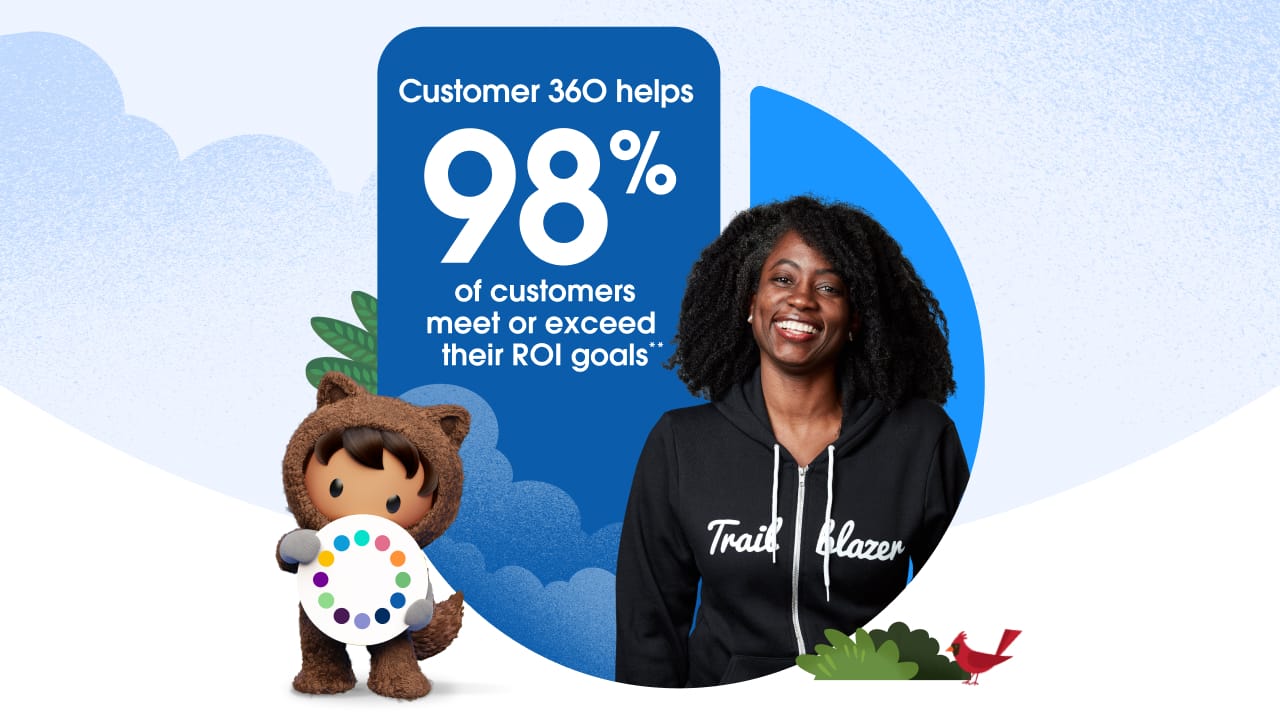A bit of planning upfront can be the difference between realising significant value and wondering why you made the investment in the first place.
If you’re like most executives, you spend a lot of time scrutinising and justifying the merits of new tech investments — especially during a downturn.
But once you make that decision to spend, chances are you don’t spend nearly as much time considering how to ensure it pays off. That is a costly oversight. In fact, a little bit of planning and organisation upfront can be the difference between realising significant value and wondering why you made the investment in the first place.
Let me walk you through six steps you can take to drive and measure success on your IT investment – something my team at Salesforce, Business Value Services (BVS), helps companies with on a regular basis. These reflect our tried-and-true methods that can help you get the most value from your technology investments, regardless of your company size, maturity level, or industry.
Deliver success now
Learn how Customer 360 helps you increase efficiency, improve results, and lower costs.

1. Use our V2MOM framework
What’s your vision for how this technology will shape the future of your business? If that isn’t already clear, it’s time to bring the right executives, partners, and users together to align on it.
This vision should be broken down into discrete business goals and outcomes – faster customer onboarding, for instance, or higher subscription-based revenue. Without that, you lack the compass that guides the purchase. Business goals and outcomes keep you focused on the results that matter.
We recommend using a process we follow called the V2MOM, which stands for vision, values, methods, obstacles, and measures. The V2MOM is a framework that ensures everyone is focused on the right priorities and moving toward the same goals.
2. Map success metrics to your goals and outcomes
How will you measure the success of the investment? Answering that is a key but sometimes overlooked step in establishing your vision for change.
You can choose the right success metrics by following these guiding practices:
Make them SMART
The metrics you select should be SMART, which stands for specific, measurable, achievable, realistic and time-bound. It’s not enough to say “revenue growth.” You need to be specific about the driver of growth, such as opportunity win rate vs. reduced customer churn vs. improved product mix. Be clear on how you will measure certain metrics, and make sure your targets are achievable and realistic. Far too many projects set such lofty targets that initiatives are doomed to fail in the applicable time horizon. It’s OK to have an aspirational five-year target, as long as the intermediate milestones are more realistic.
L’Oreal set a goal to increase average order value (AOV) across its family of more than 200 D2C websites, all powered by Commerce Cloud. They aimed to accomplish this by using Einstein Product Recommendations, so users could be targeted with AI-powered recommendations based on a consumer’s browsing or purchase history. Closely tracking the performance of these strategies and metrics over time helped them discover that this technology generated 15%-20% of all sales for one of their brands and helped them see double-digit increases in AOV from its websites.
Don’t forget leading and lagging indicators
The set of metrics should include both leading and lagging indicators. Leading indicators serve as an early warning sign providing you with timely insights to take corrective actions in pursuit of your stated goals. Lagging indicators simply provide the results and measurements as you can observe them at present. While useful, they lack prognostic power. Together, these two indicators provide the comprehensive dashboard you need to steward your IT investment.
However, most IT investment justifications focus on lagging indicators like revenue growth. But leading indicators – such as monthly active users or incoming calls around a new product launch – can actually be quite useful in ensuring revenue growth.
Don’t confuse use with value
Many companies use adoption metrics – like what percentage of users log in every month – as a proxy for the utility of the solutions deployed. While you certainly need your people to adopt whatever new technology you invest in, that alone isn’t enough.
You should define success in terms of the value created, whether that’s increased revenues, reduced inefficiency, or improved cash flows and productivity. A value tree that combines all these outcomes into a composite metric such as net present value (NPV) or return on investment (ROI) is usually useful to summarise the value realised succinctly.
3. Establish the baseline
One of the most prevalent and difficult situations we encounter in analysing value realised is that the customer often does not have reliable baseline values for the metrics being monitored. For example, they can tell you what the opportunity win rate is in the current quarter, but they may have no idea what it was six quarters ago. To avoid these challenges, establish the baseline and the operating guidelines at the outset: what are the metrics, how are they calculated, which data sources will be used, how often will they be measured, and who in the organisation will help you get that done?
4. Create an accountability pyramid
Any large transformation program requires good governance, including executive sponsorship, cross-team collaboration, efficient communication, and effective decision-making. While I have seen many different approaches, the one I find effective has three tiers:
- the steering committee at the top of the pyramid, which sets the strategic direction and champions the overarching mission
- the operating committee (typically including a technical account manager), which meets quarterly to monitor progress, eliminate roadblocks, and inform course correction
- the execution team, which manages the program on a day-to-day basis
That kind of accountability pyramid helps to foster agile ways of working that ultimately allow you to create value faster.
5. Know your accelerants and obstacles
Accelerants are people or things that help you move fast or build momentum quickly. They are often the change agents who will use their influence and energy to get the project off the ground. Or they may be well-defined pain points in a niche area that are easy to define and solve for, creating quick wins and useful lessons that can help you expand the transformation to other parts of the organisation. Knowing who they are or where they lie can help you move fast and improve time-to-value. Sometimes these change agents will sit inside your organisation and other times it may make sense to bring in expert partners to help bring your vision to life quickly.
Obstacles are people or things that can slow down the momentum or otherwise hinder you from realising the value of your digital capabilities. A common question I ask customers in these planning meetings is, ”Why will this initiative not succeed?“ The goal is to then prioritise those potential roadblocks and proactively address them. For instance, if adoption is a big concern, plan for extensive training as part of your rollout and bring in change experts.
6. Execute, monitor and adapt
Having established the business goals, metrics, baseline, and transformation coalition, you are now ready to start the journey. This step is all about executing the plan and collecting relevant, timely data to inform how you are doing. You need to remain curious about the signals you are seeing. If the leading indicators portend trouble ahead or if the resulting key performance indicators (KPIs) appear less than satisfactory, you should inform all the key stakeholders and promptly address the root causes of the issue.
One of our large customers noticed that its sales representatives were using Salesforce to enter opportunities when they were ready to close deals but otherwise kept all sales activities and key contacts in Excel and PowerPoint. This limited the power of automation, intelligence, and collaboration that make Customer 360 so valuable. You can’t uncover problems like this if you’re only looking at utilisation metrics. The lesson here is to monitor performance and adapt as soon as issues arise.
Making smart IT investments is critical to your long-term success, especially in today’s tough economic environment. But turning those investments into great returns and success stories requires thoughtful planning, disciplined execution, and continuous improvements.
Drive productivity at your company
Learn the skills you need to drive efficiency and deliver success at your company now.

























